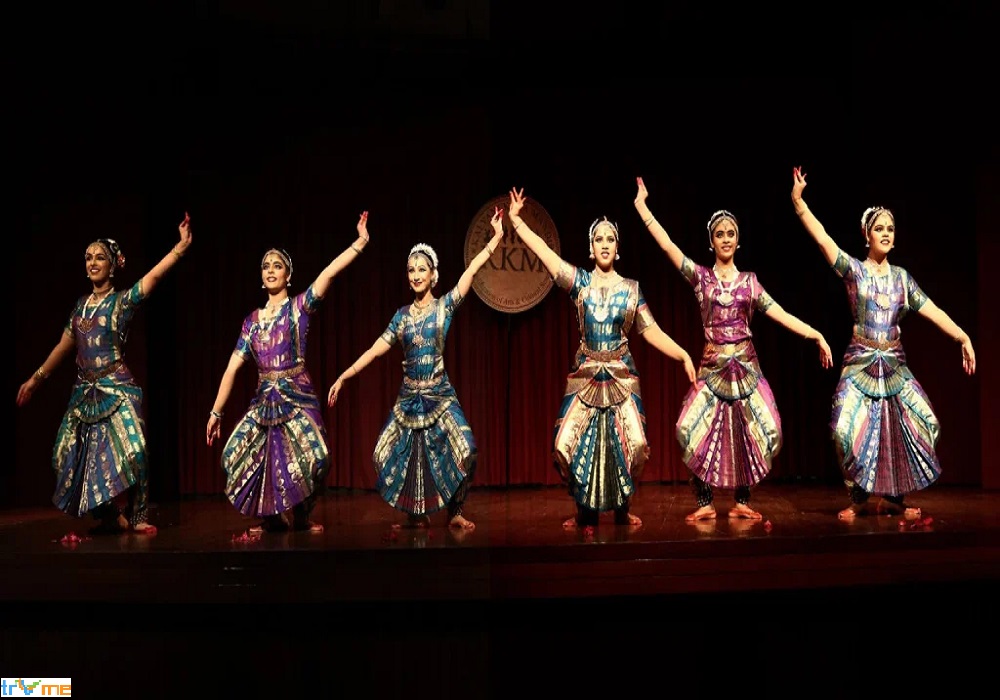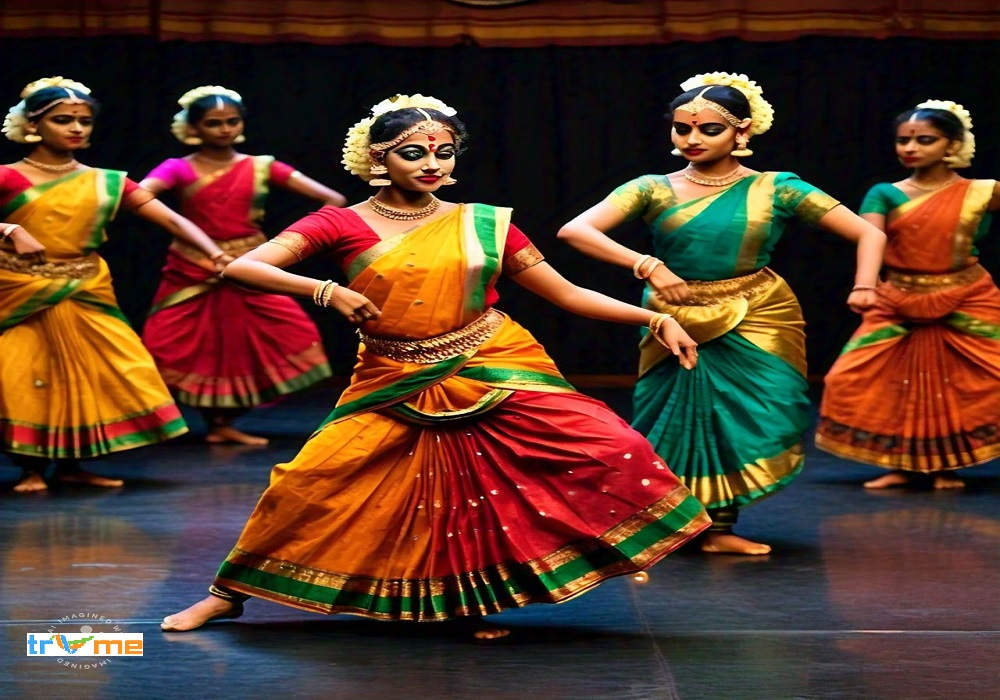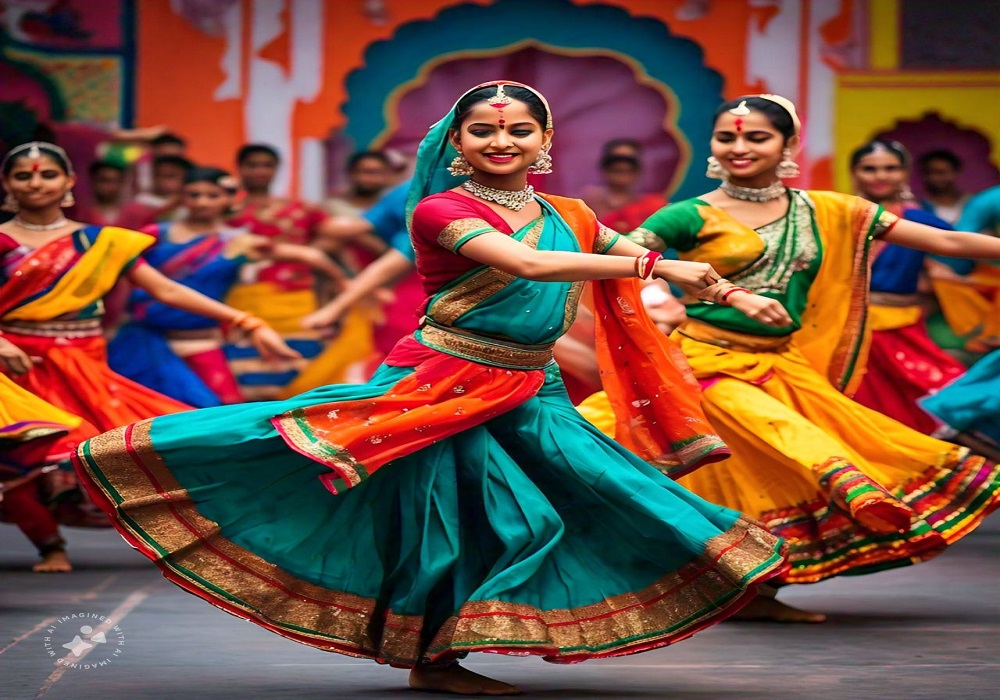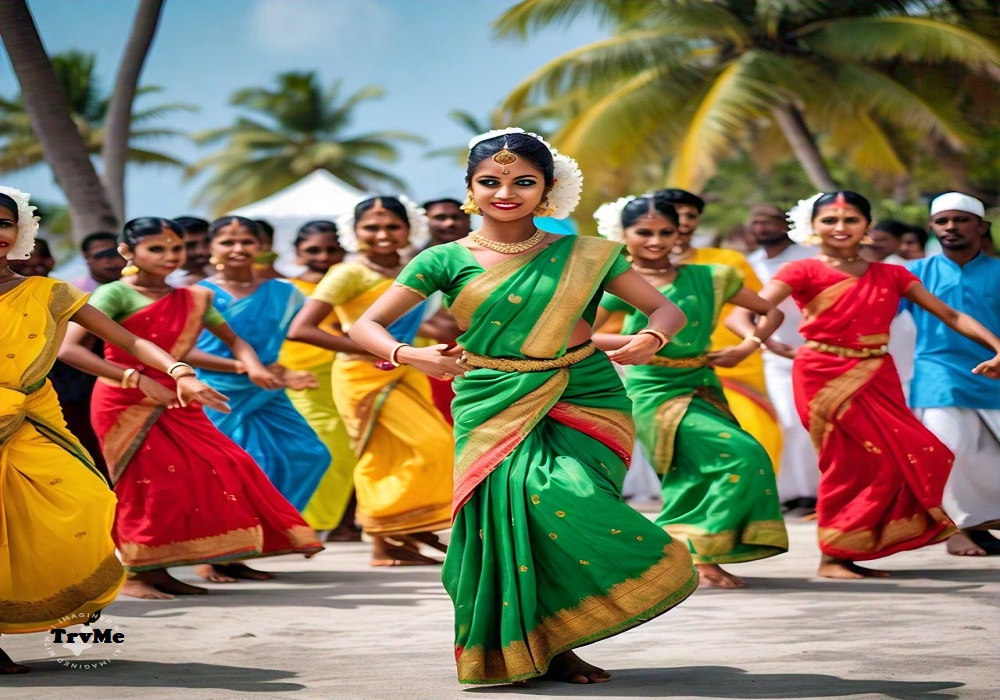Kuchipudi Dance Troupe

Published: 16 Sep 2024 • Last Updated: 16 Sep 2024
Kuchipudi Dance
Overview of Kuchipudi Dance Troupe
Kuchipudi, originating from the small village of the same name in Andhra Pradesh, India, is one of the eight major Indian classical dance forms. It is renowned for its grace, fluidity, and the ability to seamlessly blend narrative and performance. The dance is deeply rooted in the Natya Shastra, the ancient Indian treatise on dance and drama, and it reflects a rich cultural tapestry that weaves together classical, folk, and tribal elements.
Historical Background
Kuchipudi derives its name from the village of Kuchelapuram in Krishna district, Andhra Pradesh. Historically, the dance was performed by male Brahmins, known as Bhagavathalu, who traveled from village to village enacting religious stories, particularly episodes from Hindu mythology. Over time, it evolved from a dance-drama tradition into a solo performance art, with women also taking up roles.
Characteristics of Kuchipudi Dance
Kuchipudi is known for its strong narrative and dramatic elements. Performers use a combination of dance, mime, and music to tell stories from Hindu epics like the Ramayana, Mahabharata, and the Puranas. Unlike Bharatanatyam, which is predominantly centered on pure dance (nritta) and expression (abhinaya), Kuchipudi incorporates a significant amount of dialogue and theatrical elements.Key Characteristics Include:
- Natya and Nritta: Kuchipudi emphasizes both the expressive (natya) and pure dance (nritta) aspects, with a focus on abhinaya, or the art of storytelling through facial expressions, gestures, and body movements.
- Tarangam: One of the unique features of Kuchipudi is the "Tarangam," where the dancer performs intricate footwork on the edges of a brass plate, while balancing a pot of water on their head. This showcases the dancer's skill and balance.
- Vachika Abhinaya: Unlike other classical dance forms, Kuchipudi performers often sing their own songs and recite dialogues, adding a layer of vocal expression to the performance.
- Grace and Fluidity: The dance is characterized by graceful movements, rounded hand gestures, and swift transitions. The footwork is fast-paced yet delicate, creating an illusion of effortless fluidity.
Traditional Costume for Kuchipudi
The traditional costume of Kuchipudi is vibrant, elaborate, and designed to enhance the visual appeal of the dance. It typically consists of a sari for women and a dhoti for men, with specific elements that distinguish it from other dance forms.
# Costume Elements for Women
- Sari: Women wear a specially stitched sari, often made of silk, which is pleated in the front to allow for free movement. The pleats open up like a fan during certain poses, adding to the visual beauty of the dance.
- Blouse (Choli): A matching blouse with short sleeves is worn, fitting snugly to allow for ease of movement.
- Headgear and Jewelry: The dancer wears an elaborate headgear called "Chutti," which frames the face. Jewelry is an essential part of the costume, including necklaces, earrings, armlets, waistbands, and anklets. The dancer also wears a nose ring and a decorative piece on the forehead known as "Nethichutti."
- Ankle Bells (Ghungroos): A set of small bells, or ghungroos, are tied around the ankles to accentuate the rhythmic footwork.
- Makeup: Makeup is used to highlight the eyes and facial expressions. The eyes are outlined with kajal to make them appear larger and more expressive. A bold red color is applied to the lips and the tip of the fingers, enhancing the mudras (hand gestures).
# Costume Elements for Men
- Dhoti: Men wear a dhoti tied in a unique style that allows for ease of movement and adds to the visual drama of the performance.
- Upper Garment: A fitted blouse or an angavastra (a shawl-like garment) is worn over the torso.
- Jewelry: While not as elaborate as the women's costume, male dancers wear jewelry such as necklaces and armlets to complement their attire.
- Ankle Bells (Ghungroos): Similar to female dancers, men also wear ghungroos to accentuate their footwork.
- Makeup: Makeup is subtle compared to female dancers, focusing on highlighting the eyes and facial features to enhance expressions.
Dance Forms in Kuchipudi Repertoire
Kuchipudi incorporates various forms of dance within its repertoire, including classical, folk, and tribal dance elements, making it a versatile and dynamic performance art.
# Classical Dance Forms
Kuchipudi shares many similarities with other classical dance forms, including:
- Nritta: Pure dance movements that are rhythmically intricate and visually captivating. This includes various jatis (rhythmic patterns) and adavus (basic dance steps) that form the foundation of the dance.
- Nritya: Expressive dance that combines rhythmic movements with facial expressions and gestures to convey emotions and tell stories.
- Natya: The dramatic aspect, where the dancer enacts characters and scenes from mythological stories, often incorporating dialogue and vocal expressions.
# Folk Dance Influences
Kuchipudi also incorporates elements of folk dance, adding a regional flavor and vibrancy to the performances. These influences include:
- Kolattam: A folk dance involving rhythmic clapping of sticks, which is sometimes incorporated into Kuchipudi performances to depict festive scenes.
- Veeranatyam: A dance dedicated to Lord Shiva, characterized by vigorous movements and dynamic expressions.
- Yakshagana: A form of dance-drama that combines dance, music, dialogue, and costumes, influencing Kuchipudi's narrative style.
# Tribal Dance Influences
Tribal dance forms have also contributed to the development of Kuchipudi, bringing a raw and energetic quality to the performances. Some tribal elements that have been absorbed into the dance include:
- Perini: A warrior dance performed in honor of Lord Shiva, known for its powerful and vigorous movements.
- Lambadi: A tribal dance of the Lambadi community, known for its energetic and rhythmic movements, which has influenced some aspects of Kuchipudi's choreography.
Training and Performance
Kuchipudi dancers undergo rigorous training in various aspects of the art form, including:
- Adavus: Basic steps and movements that form the foundation of the dance.
- Mudras: Hand gestures that are used to convey specific meanings and emotions.
- Abhinaya: The art of expression, including facial expressions and body language.
- Music and Rhythm: Understanding the intricacies of Carnatic music and rhythmic patterns is crucial for a Kuchipudi dancer, as the dance is often performed to live music.
Performances typically begin with an invocation, followed by a series of solo and group pieces that showcase the dancer's skill in nritta, nritya, and natya. A Kuchipudi recital often includes:
- Ganapati Vandana: An invocation to Lord Ganesha to bless the performance.
- Jatiswaram: A pure dance sequence showcasing intricate footwork and rhythmic patterns.
- Shabdam: A narrative piece that introduces the dramatic elements of the dance.
- Padams and Javalis: Expressive pieces that depict various emotions and themes from mythology and everyday life.
- Tarangam: The highlight of the performance, where the dancer balances on a brass plate while executing complex footwork.
Contemporary Kuchipudi Dance Troupes
In the modern era, Kuchipudi has gained international recognition, with dance troupes performing worldwide. Contemporary Kuchipudi dance troupes have adapted the traditional form to appeal to global audiences while maintaining the essence of the dance. These troupes often incorporate innovative choreography, fusion elements, and thematic presentations to showcase the versatility and timeless appeal of Kuchipudi.
Prominent Kuchipudi dancers and gurus, such as Vempati Chinna Satyam, Raja and Radha Reddy, and Yamini Krishnamurthy, have played a significant role in popularizing the dance form both in India and abroad. Their contributions have ensured that Kuchipudi continues to thrive as a vibrant and dynamic art form.
Kuchipudi is a beautiful amalgamation of classical, folk, and tribal dance elements, characterized by its grace, fluidity, and expressive storytelling. The traditional costume, with its vibrant colors and intricate jewelry, enhances the visual appeal of the dance, adding to its allure. As Kuchipudi dance troupes continue to evolve and innovate, they keep the rich cultural heritage of this ancient art form alive, captivating audiences around the world with their performances.



